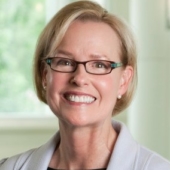THIS ARTICLE IS MORE THAN FIVE YEARS OLD
This article is more than five years old. Autism research — and science in general — is constantly evolving, so older articles may contain information or theories that have been reevaluated since their original publication date.

Autism can be reliably diagnosed by 2 years of age, but roughly half of children with the condition do not receive a diagnosis until age 6 or later. Being female or from an ethnic minority group, among other factors, may contribute to a delayed diagnosis of autism.
The lack of universal screening for autism among toddlers contributes to the disparities in access to early diagnosis. Pediatricians relying solely on clinical judgement disproportionately fail to detect and refer certain children. This means that many children with autism miss out on early intervention during the years when the brain is rapidly developing and most responsive to treatment.
If we could detect autism early enough, in infancy, and coach parents to provide extra social stimulation to their babies, we could improve the outcome for children with autism — and perhaps even prevent some from developing the disabling features that define the condition.
This is not as far-fetched as it might have seemed even a few years ago. Researchers and policymakers are working to bridge the gap between the age of reliable diagnosis and access to care. At the same time, scientists are exploring approaches for detecting autism in its earliest stages.
This paradigm shift from ‘diagnose and treat’ to ‘predict and preempt’ has already occurred with Parkinson’s and Alzheimer’s diseases. In these conditions, the goal is to identify and treat during the prodromal stage — for example, when changes in olfaction or mild cognitive impairment first appear.
In the case of autism, early detection and intervention could help correct the course of brain development1.
Scientists are identifying biomarkers that allow for detection of autism at this prodromal stage — as early as infancy. What’s more, new studies suggest that low-intensity coaching sessions for parents of infants could improve outcomes for children with autism.
Picking up patterns:
To detect autism early, some scientists are looking for characteristic alterations in patterns of attention, motor function and vocalizations.
They are picking up these patterns using technologies ranging from eye tracking to various types of brain imaging, including electroencephalography (EEG) and magnetic resonance imaging. Others are looking for biomarkers in blood samples, which can reveal differences in gene expression signatures and immune-related markers.
Many of these studies follow infants called ‘baby sibs,’ who have an older sibling with autism. Baby sibs are at elevated risk of autism: About one in five of them has the condition. These studies have shown, for example, that infants who are later diagnosed with autism are paying attention to the world in unusual ways beginning sometime between 2 and 6 months of age2.
In a study conducted in our lab, we showed that at 6 months, baby sibs later diagnosed with autism show atypical neural responses to faces3. We detected these responses by measuring electrical signals called event-related brain potentials (ERPs). Other researchers have shown that, by 6 to 12 months, these infants also differ from controls in various structural brain features, including atypical development of nerve tracts, enlarged brain surface area, and the presence of extra fluid surrounding the brain4,5.
As scientists become better able to detect autism early, perhaps even before its behavioral features appear, some groups are exploring treatments that can be implemented in infants. Three studies, published in the past few years, provide early hints that training parents to provide extra social stimulation to infants at risk of autism can ameliorate features of the condition.
Parent coach:
In a 2014 study, Sally Rogers and her colleagues at University of California, Davis provided coaching sessions to the parents of seven babies who were showing early behavioral signs of autism6. These babies, who were between 7 and 15 months of age, were often overly fixated on objects. Many also showed repetitive behaviors, lack of coordinated gaze, reduced babbling and low social interest.
The coaching consisted of interactive strategies, such as responding when the baby made subtle communicative gestures and body movements, to promote social engagement and communication. This was a parent-delivered version of the Early Start Denver Model, a developmental behavioral intervention that Sally Rogers and I designed for toddlers and preschool-age children with autism7.
Between 18 and 36 months, the treated children exhibited significantly fewer autism features than the untreated children — but still more than is typical for babies their age. The treated children also had language skills similar to those of their typical peers, whereas untreated ones showed significantly delayed language.
In 2015, a team led by Jonathan Green at the University of Manchester in the United Kingdom reported results from a randomized controlled trial of an infant intervention involving 54 baby sibs8. When the baby sibs were between 9 and 14 months old, a therapist visited their homes at least six times to videotape interactions between the babies and their parents. The therapists provided feedback on the taped footage, with the goal of promoting communication and social interaction between parent and child.
The researchers saw no differences between the groups in attentiveness to parents, but babies in the intervention group had lower scores on an assessment of autism features and showed less ‘sticky’ attention to stimuli, a common feature of autism. Their parents also reported significant improvements in adaptive behavior — behaviors used in daily living — reflected mostly in improved social behavior.
In a follow-up study published in April, the researchers retested the babies at age 39,10. They saw no effect from the intervention on autism diagnoses, but the treated children had milder autism features and were more attentive to their parents and more likely to initiate interactions with them. The intervention did not affect overall development or language at age 3.
Memorable faces:
In a third study, our team at the University of Washington studied the potential benefits of an infant intervention called Promoting First Relationships11. The randomized study involved 33 baby sibs and their parents, who were either monitored over time or were paid 10 weekly home visits by trained parent coaches.
At the visits, which lasted 60 to 85 minutes, coaches videotaped parent-infant interactions and reviewed them with the parent to identify additional ways of responding to the infant’s subtle cues. For example, a parent might imitate the infant’s babbling.
Before the intervention, we assessed the infants in three ways at 6 months of age. In earlier work, we found that toddlers with autism have trouble remembering faces, so we tested the infants’ ability to remember faces by measuring how long it takes them to recognize a face shown repeatedly.
We also recorded the infants’ brain waves using EEG while they watched videos of women singing nursery rhymes and videos of dynamic, sound-making toys. And because we know that children with autism show a reduced brain response to faces, we measured the infants’ ERPs in response to photos of faces and objects.
At 9 months, half of the babies started the intervention, and we assessed them again when they were 12 and 18 months old. We compared their responses with those of 150 typical babies. At both ages, the treated babies were faster to encode faces in memory, but showed no advantage in memory for objects. We also found a relatively larger increase in the power of ‘theta’ brain waves in the treated group at 12 months, but the group difference was not evident at 18 months.
Course correction:
We did, however, find group differences in ERPs to faces at both 12 and 18 months: The babies who received the intervention showed brain responses to faces similar to those of the typical babies. By contrast the untreated babies’ neural responses to faces were smaller than those of typical babies.
This is the first study to show that early intervention delivered by parents before features appear can alter infants’ ability to encode facial information as well as normalize some patterns of brain activity. We are now examining whether these early differences affect diagnostic outcome at 24 and 36 months.
These early proof-of-concept studies are encouraging. If large, controlled trials demonstrate that these types of preemptive treatment strategies are effective, we may be able to positively influence development during the prodromal phase when the neural systems governing social skills and language are rapidly developing.
In this way, we may be able to reduce the severity of autism features, perhaps changing its trajectory and offering better outcomes for individuals with autism.
Geraldine Dawson is professor of psychiatry and behavioral sciences at Duke University in Durham, North Carolina, and director of the Duke Center for Autism and Brain Development.

By joining the discussion, you agree to our privacy policy.